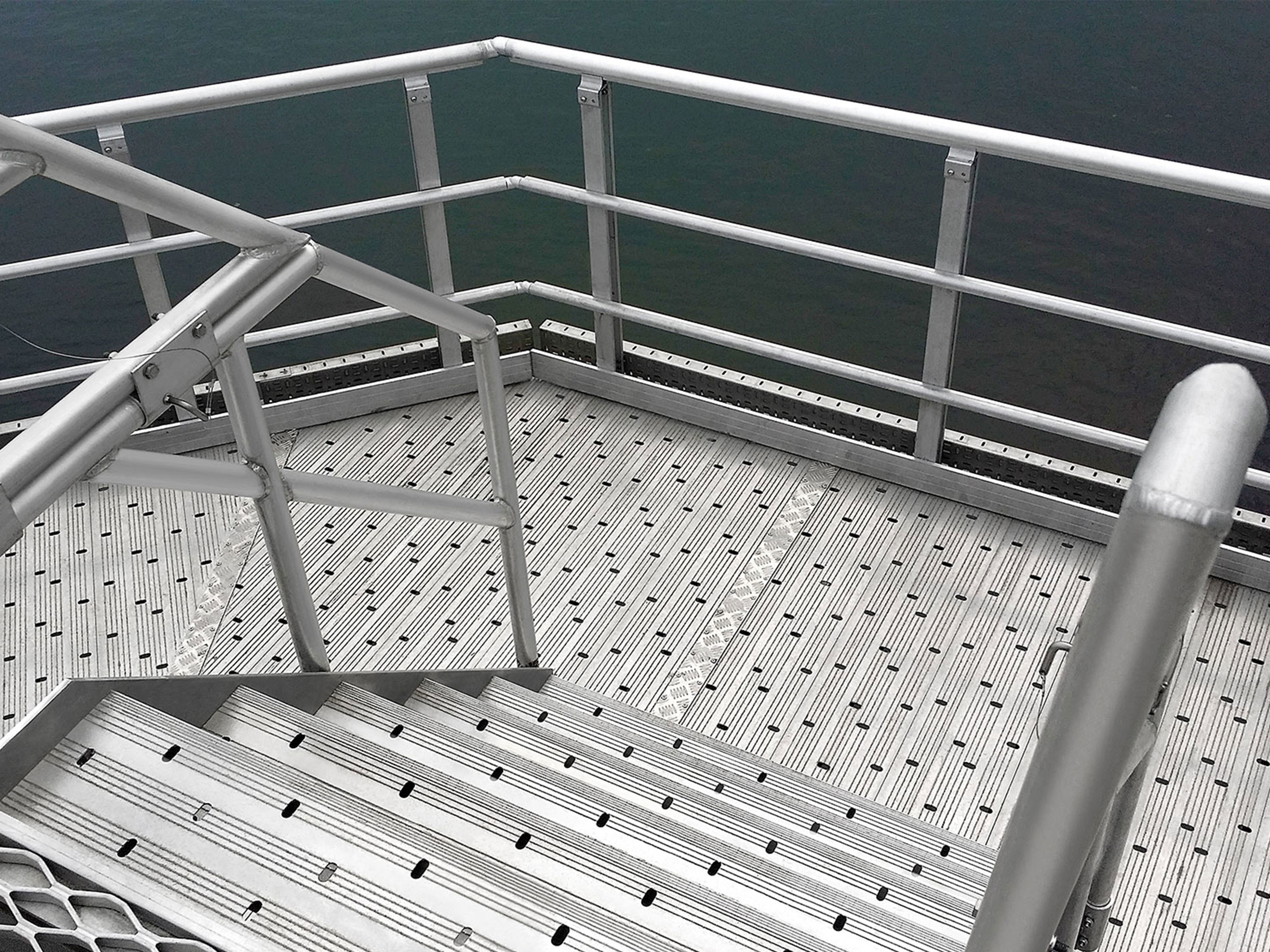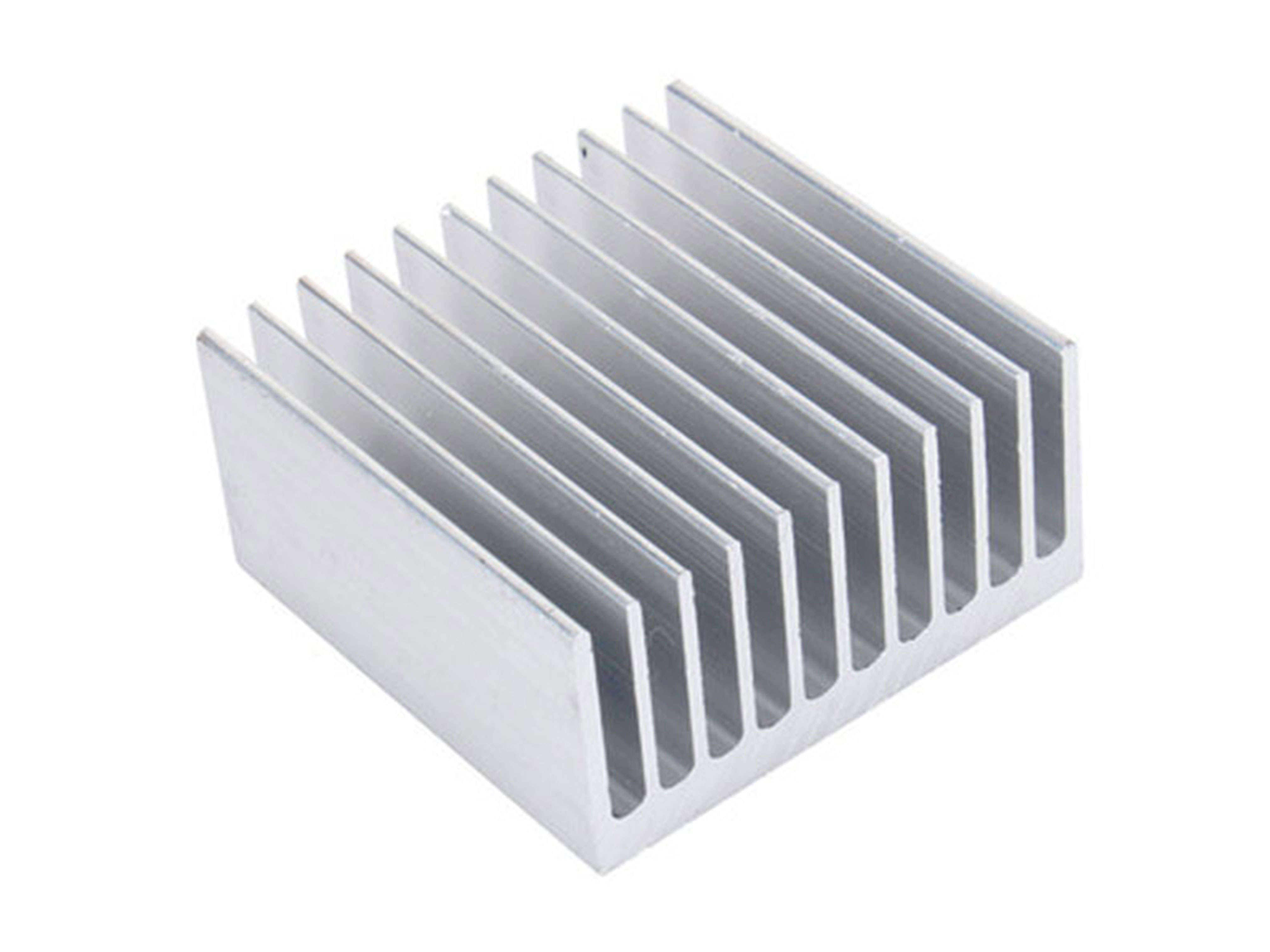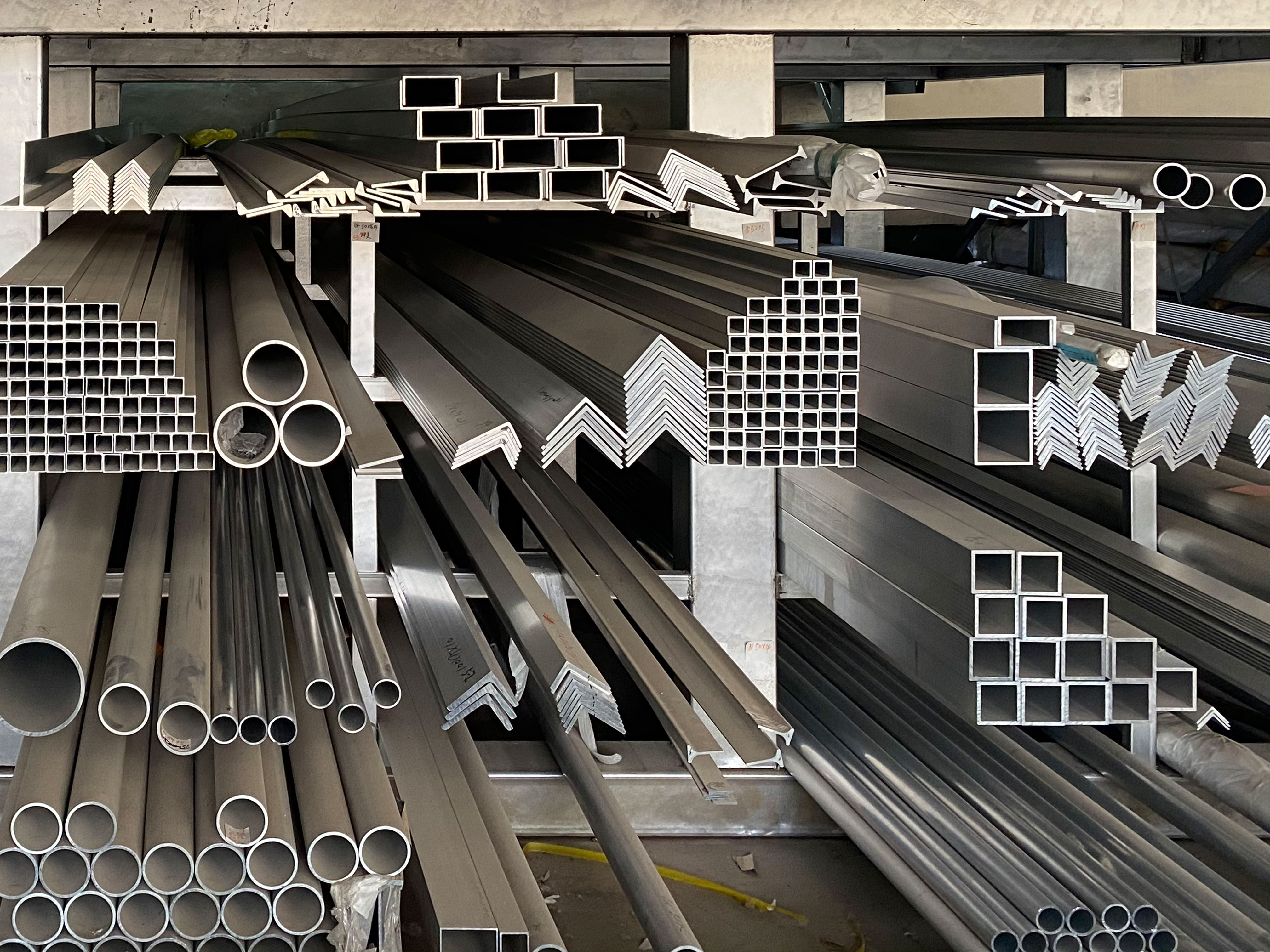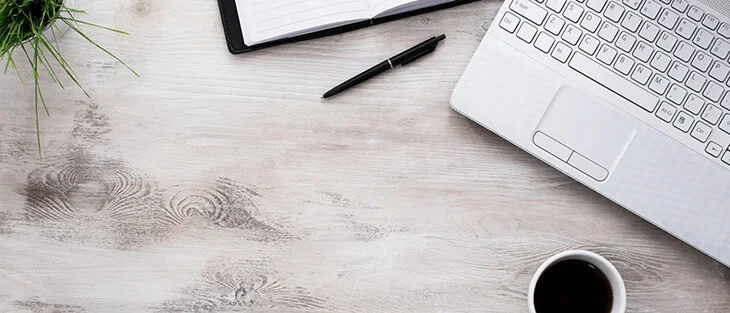Marine Aluminum Fencing and Railings for Durable Boat Deck Guardrails
Marine aluminum fencing and railings are purpose-designed alloy systems used for guardrails, handrails, stanchions, and safety barriers on boats, docks, marinas, and waterfront properties. These systems combine light weight, high corrosion resistance, ease of fabrication, and low maintenance to meet the demanding environment of saltwater and coastal exposure.
Features
Corrosion resistance: Marine-grade aluminum alloys resist pitting and galvanic corrosion in coastal/salty environments when properly selected and finished.
Lightweight strength: High strength-to-weight ratio allows structurally sound railings without excessive dead load on boat decks or docks.
Low maintenance: Aluminum does not rust and requires minimal painting or upkeep compared with ferrous metals.
Ease of fabrication: Readily weldable and formable — allows custom bends, extrusions, and ornamental designs.
Aesthetic versatility: Can be anodized, powder-coated, or mechanically brushed for varied finishes that match vessel styling.
Non-magnetic and non-sparking: Safe for environments where magnetism or sparks are concerns.
Recyclable: Aluminum is highly recyclable, supporting sustainability goals.
Common Marine Aluminum Alloys Used
6061-T6: Most common structural marine alloy. Good strength, weldability, and corrosion resistance with balanced mechanical properties.
5083-H116 / 5086-H116: High-magnesium alloys with excellent seawater corrosion resistance; widely used in shipbuilding and hulls where higher strength in marine environments is required.
5052-H32: Good formability and corrosion resistance; often used for components and trim.
6005A / 6063-T5: Common for extruded architectural profiles (balusters, top rails) due to excellent extrudability and surface finish compatibility.
Technical Specifications (typical values)Note: Values vary by alloy, temper, section size and manufacturing method. Use material datasheets and structural engineering calculations for final designs.
Representative Mechanical Properties of Common Marine Alloys
| Alloy | Typical Tempers | Ultimate Tensile Strength (MPa) | Yield Strength (MPa) | Elongation (%) | Density (g/cm³) |
|---|---|---|---|---|---|
| 6061-T6 | T6 | 310–350 MPa UTS | 275–310 MPa YS | 8–12% | 2.70 |
| 5083-H116 | H116 | 290–350 MPa UTS | 145–200 MPa YS (varies by thickness) | 10–20% | 2.66 |
| 5052-H32 | H32 | 185–215 MPa UTS | 120–160 MPa YS | 8–12% | 2.68 |
| 6063-T5 | T5 | 160–220 MPa UTS | 110–170 MPa YS | 8–10% | 2.70 |
Corrosion and Surface Finish Options
| Finish Type | Description | Typical Salt-Spray Resistance | Maintenance Notes |
|---|---|---|---|
| Mill Finish | As-extruded without coating | Low to moderate | May show oxidized whitish film; little protection in prolonged saltwater exposure |
| Anodized (Class I/II) | Electrochemical oxide layer, decorative | Moderate | Improves appearance and abrasion resistance; thickness depends on specification |
| Powder Coat (polyester/epoxy-polyester) | Applied over pretreated surface | High (with proper pretreatment/primer) | Best for color durability; inspect for chips that expose substrate |
| Marine Grade Paint | Primers and topcoats formulated for saltwater | High | Requires periodic repaint touch-up in high-wear areas |
| Mechanical Buffing/Polished | Polished bright finish | Moderate | Shows oxidation slower, requires periodic polishing |
Performance Considerations
Galvanic Corrosion: When aluminum is in contact with dissimilar metals (stainless steel, bronze, copper), galvanic corrosion risk increases. Proper isolation (nylon washers, gaskets, coatings), use of compatible fasteners (aluminum or 316 stainless steel with isolators), and design detailing minimize risk.
Structural Load Capacity: Guardrails must meet applicable marine or building codes for handrail height and live-load design (commonly 0.8–1.2 kN/m horizontal for guardrails depending on jurisdiction). Use engineering calculations to size posts, rails, and fastenings.
UV and Salt Exposure: Powder coats and marine-grade paints must be specified with UV stabilizers and salt-spray resistance to avoid premature degradation.
Thermal Expansion: Aluminum has higher thermal expansion than steel; design allowances for expansion in long continuous rails and extrusions are necessary.
Fatigue Life: For vessels and docks subject to repeated loading (waves, vibration), consider fatigue behavior of welded joints and choose alloys/temper treatments accordingly.
Design and Configuration Options
Post types: Surface-mount bases (deck flanges), in-deck stanchions, and through-deck stanchions with backing plates.
Rail profiles: Round tubular rails (popular for nautical styling), square/rectangular tubes, and custom extruded top rails.
Infill options: Horizontal rails, vertical balusters, cable infill (stainless steel wire rope), glass panels (tempered laminated marine glass with structural supports), perforated panels, or mesh.
Handrail heights: Typically 900–1100 mm for guardrails depending on code and vessel type. Secondary mid-rail or life-line often required.
Mounting: Surface mount with through-bolting and backing plates, cast-in inserts for docks, and welded assemblies.
Modular kits vs custom fabrication: Off-the-shelf railing kits expedite installation; custom extrusions and welded assemblies suit unique vessels or architectural requirements.
Typical Use Cases
Boat decks and yacht guardrails: Lightweight and attractive rails that meet safety requirements while minimizing additional top weight on the vessel.
Marina finger piers and walkways: Corrosion-resistant rails for pedestrian safety on docks and piers.
Commercial vessels and ferries: Heavy-duty stanchions and handrails built to withstand frequent use and compliance demands.
Waterfront promenades and seawalls: Aluminum railings for coastal public spaces where corrosion and maintenance concerns are paramount.
Floating platforms and offshore installations: Use of 5083-type alloys for enhanced seawater performance where structural demands are higher.
Residential waterfront properties: Balconies, decks, and pool surrounds where a marine-grade aesthetic and resistance to salt air are desired.
Installation Best Practices
Use proper fasteners: 316 stainless steel or aluminum fasteners with isolating washers/gaskets for dissimilar metal separation. Avoid plain carbon steel in marine applications.
Surface preparation: For powder coat or paint, ensure proper chemical conversion coating (e.g., chromate or non-chrome alternatives) and priming per coating manufacturer recommendations.
Through-bolting and backing plates: When mounting to thin deck structures, use appropriately sized backing plates and fasteners to distribute loads and prevent pull-through.
Welding standards: If welding, use appropriate filler alloys (e.g., 5356 for 5xxx base alloys; 4043/5356 for 6xxx) and control heat input to maintain mechanical properties and minimize distortion.
Drainage and clip design: Avoid trapping water beside flanges or in hollow sections; provide drainage holes where appropriate.
Tolerances for thermal movement: For long runs, include expansion joints or slotted connections.
Maintenance Guidelines
Regular rinse: Periodic freshwater rinsing removes salt deposits and reduces corrosive attack.
Inspect fastenings and coatings: Look for loose bolts, chipped coatings, and galvanic attack; touch-up coatings promptly.
Remove galvanic corrosion early: Clean affected areas, apply appropriate corrosion inhibiting primers, and isolate dissimilar metals.
Refinish when required: Powder coat and paint systems will eventually need refurbishing depending on exposure and abrasion.
Advantages Over Other Materials
Compared to stainless steel: Lighter and easier to machine and form; typically lower cost for comparable lengths and less influence on vessel stability. Stainless has higher hardness and scratch resistance but can suffer crevice corrosion in some chloride environments.
Compared to galvanized steel: Aluminum avoids heavy corrosion products and has exceptional recyclability; galvanized steel may be heavier and require more maintenance in marine atmospheres.
Compared to wood: Aluminum is more durable, requires less maintenance, and provides consistent mechanical properties without rot or insect damage.
Safety and Compliance
Codes: Meet local building codes, marine classification society requirements (Lloyd’s, ABS, DNV, etc.) and OSHA or local maritime safety standards for handrails and guardrails.
Slip resistance: When handrail is used as a horizontal surface, select profiles and coatings that provide adequate grip even when wet.
Edge treatment: Smooth rounded edges and closed end caps reduce snag and injury risk.
Cost Considerations
Materials: Alloy selection (e.g., 6061 vs 5083) and finish (mill vs powder coat vs anodize) are primary cost drivers.
Fabrication: Custom extrusions, welding, and complex assemblies increase cost relative to modular kits.
Life-cycle cost: Higher upfront cost for marine-grade aluminum with quality coating can be offset by lower maintenance and longer service life in saltwater settings.
Sample Project Specification (concise)
Material: 6061-T6 for extruded top rails and 5083-H116 for structural stanchions where continuous seawater exposure expected.
Finish: Pre-treatment followed by polyester powder coat, 60–80 microns DFT, color per owner.
Fasteners: 316 stainless steel with EPDM isolator washers at all dissimilar metal interfaces.
Design loads: Guardrail to resist 0.9 kN/m horizontal concentrated load and 1.5 kN concentrated at top rail per applicable code.
Infill: Horizontal 7 mm 1x19 316 stainless steel cables at 100 mm vertical spacing with swage fittings and turnbuckles for tensioning.
Marine aluminum fencing and railings provide a balanced combination of corrosion resistance, light weight, structural performance, and aesthetic flexibility that make them ideal for boat deck guardrails, marina infrastructure, and waterfront architecture. Proper alloy selection, finishing, fastener compatibility, and installation practices ensure long life and low maintenance in harsh marine environments. For critical vessel applications, engineering to applicable codes and consideration of fatigue and galvanic interactions is essential. When specified and installed correctly, marine aluminum railings deliver safe, attractive, and durable solutions for both recreational and commercial maritime uses.
Related Products
Marine aluminum customized shapes
Marine Grade Aluminum Customized Shapes encompass a broad range of aluminum extrusions and fabrications engineered beyond standard profiles—such as channels, angles, tubes, and beams—into complex, project-specific geometries.
View DetailsMarine aluminum heat sink profile
Marine Grade Aluminum Heat Sink Profiles utilize alloys such as 6061 and 6063 that not only exhibit high thermal conductivity but also possess excellent corrosion resistance required for saltwater exposure.
View DetailsMarine aluminum fencing and railings
Marine Grade Aluminum Fencing and Railings are fabricated using marine-grade aluminum alloys such as 5083, 5052, and 6061, which are engineered specifically for protection against saltwater corrosion and marine atmospheric conditions.
View DetailsRelated Blog
Marine Aluminum Fencing and Railings for Durable Boat Deck Guardrails
OverviewMarine aluminum fencing and railings are purpose-designed alloy systems used for guardrails, handrails, stanchions, and safety barriers on boats, docks, marinas, and waterfront properties.
View Details5052 Marine Aluminum Fencing and Railings for Saltwater Proof Marine Railing Systems
When it comes to marine applications, durability, corrosion resistance, and strength are non-negotiable. One material that stands out as a superior choice for fencing and railing systems on ships, docks, and coastal structures is 5052 Marine Aluminum.
View Details5052 Marine Aluminum Customized Shapes for High Strength Offshore Platforms
Superior qualities of 5052 Marine Aluminum, a high-strength material ideal for customized shapes used in offshore platforms. Learn about its key features, applications, and technical specifications.
View Details







Leave a Message